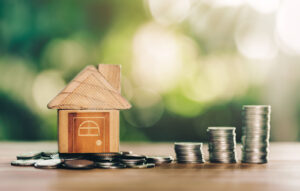When it comes to property development, one very clear trend has just started to emerge in the UK – and that’s zero energy homes.
This is, perhaps, inevitable given the climate crisis and the growing need for us all to become more sustainable across the board – and, in fact, it’s essential that property development does become greener, given estimates that the built environment contributes 40 per cent of the nation’s carbon emissions.
Decarbonisation of the construction sector is becoming increasingly urgent – and this is certainly where zero energy homes will come into their own.
What are zero energy homes?
Zero energy houses look exactly like any other kind of home, but with some fundamental design differences. They’re airtight, very well insulated and extremely energy efficient, producing as much energy as they consume year in, year out.
What this means for homeowners is that their house will be carbon-free and they’ll have a net zero energy bill… which is great for the planet, of course, but also their back pockets – an increasing concern considering the ongoing hikes in the cost of living these days.
The quality of the building is second to none, with thicker walls, filtered air and advanced window technologies, making properties more resilient and durable than others available on the market.
What does the design involve?
A range of different eco-friendly principles are adhered to in order to deliver zero energy homes, everything from property shape and location to size, ceiling type, roof overhangs, enclosing insulation, air tightness, ventilation, solar energy… the list goes on and on.
The ideal location for this kind of property is somewhere with flat topography, unobstructed sun and little exposure to the elements. Solar access is of particular importance and analysis is carried out to ensure that there is sufficient sunlight available on walls and roof surfaces in order to facilitate solar power possibilities.
Another top consideration is building orientation and structures should be positioned so as to take the greatest advantage of sun angles season by season to maximise solar energy production, as well as passive heating and cooling.
The path to zero carbon
Given that every building being constructed today will last for decades and possibly even centuries, the carbon footprint of construction must be considered… covering everything from the actual building process to transportation, installation, maintenance and recycling of materials.
Design, construction processes and equipment, and materials sourcing also needs to be decarbonised if we’re to reduce the impact of housebuilding now and well into the future.
Of course, retrofitting is just as important and if the UK is to hit its net zero carbon goals as time goes on, existing buildings will also need to be renovated to be made more energy efficient. But for those eco warriors on the lookout for a new home at the moment, a zero energy property could well be the way to go.
Looking for self-employed mortgage advice in the UK? Get in touch with Tulip Mortgages today.





